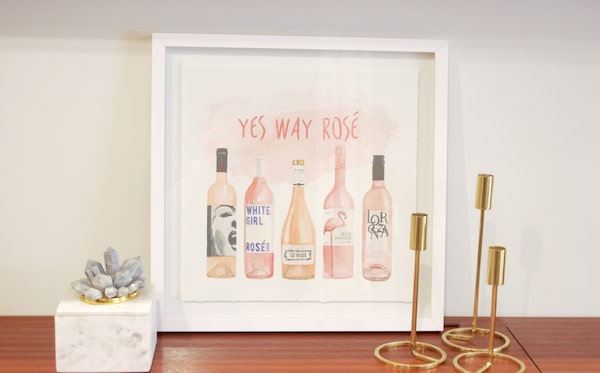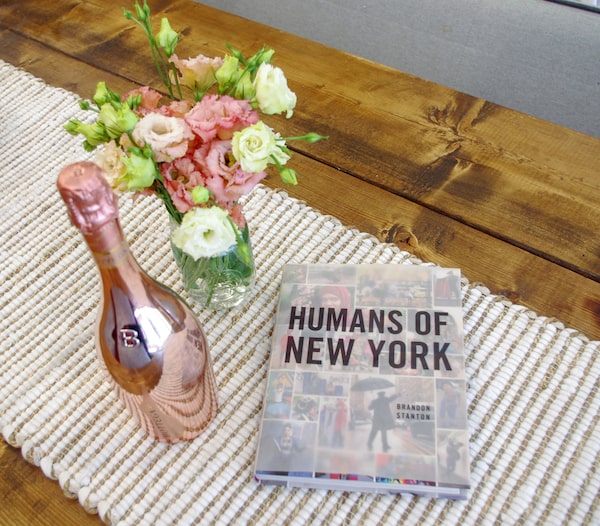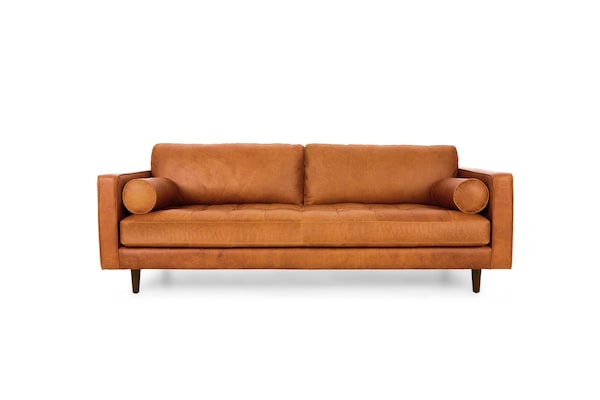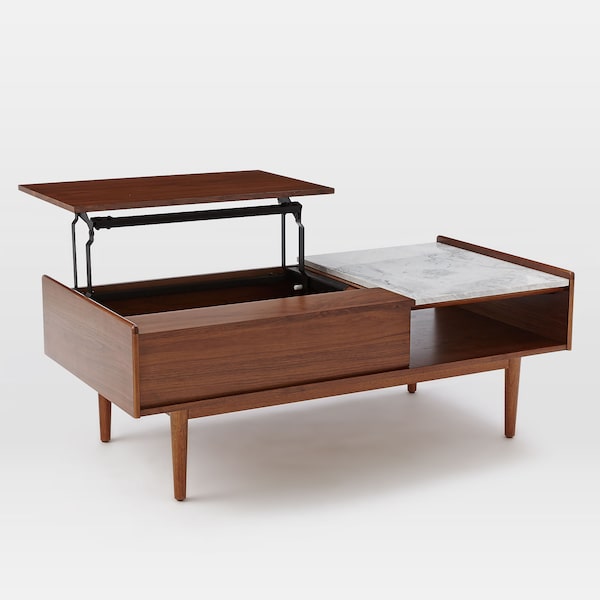
The Vancouver loft of D'Arcy Lamour.Crystal Moon Design
D’Arcy Larmour’s Vancouver loft was custom-designed for her – just her. The 760-square-foot space didn’t have much storage when she bought it two years ago. So Larmour’s interior designer, Crystal Moon, created bespoke built-ins to accommodate her love of cosmetics. What appears to be a simple, conservative work desk near the living room transforms into a vanity, with a flip-up counter that hides a mirror and makeup brushes; its drawers store a printer as well as curling irons.
The condo’s palette also reflects Larmour’s penchant for prettiness. The mix of pinks, including two blush-hued rugs, peaches and warm metals, such as the brass hardware on all the white cabinetry, soften the otherwise industrial shell, with its red-brown brick walls and polished concrete floors. “I work in finance,” the 33-year-old says, “but I still love beauty.”

The condo's palette of pinks reflects the owner's penchant for prettiness.Crystal Moon Design

Blush-hued rugs help soften the industrial shell of Lamour's loft.Crystal Moon Design
As recently as a decade ago, a glammed-up bachelorette pad such as this would have been an aberration. In her 2008 PhD dissertation for the University of Virginia, which focused on single female home buyers, Jessica Ann Lloyd detailed how alienating many residential spaces could be for women – despite the irony that they are so often the ones tasked with decorating. Lloyd wrote that “many feminists see ‘home’ as the crucible of gender domination,” observing that whereas many men get man caves and children get play spaces, women typically only have the kitchen to call their own, a concept that has been built in by design. Counter heights, after all, have historically been determined by the dimensions of the average female, not male.
Women such as Larmour are part of a demographic shift in North America that is changing the way our homes are being envisioned, however, making them more diverse and female-centric in a good way. Not only are single-person households now more common in Canada than households helmed by couples (at 28 versus 26 per cent according to the 2016 census), single women in particular are increasingly becoming major real estate investors, accounting for 15 per cent of home buyers – twice the rate of single men – according to the 2016 U.S. National Association of Realtors Home Buyer and Seller Generational Trends report. The growing clout means many women are not just decorating their own places, but revelling in them, too.

Single women like Lamour are a growing segment of the real-estate market.Crystal Moon Design
And, importantly, these bachelorette pads are not simply stop-gaps for twentysomethings on the way to coupledom. For a variety of reasons, including professional independence and the fact that women live longer, the older a woman is, the more likely she is to be solo, according to the census, whereas the same percentage of men tend to live alone regardless of age (about 20 per cent). That means this isn’t a blip, says Diane Plant, a broker with Toronto’s Forest Hill Real Estate who has seen a swell in female buyers over the past 10 years, "It’s a reality, she says. "Women are earning much more. They like knowing they can do it on their own.”
Larmour, for example, “has never lived in a place that wasn’t mine.” She bought her first piece of real estate, a townhouse, in 2006 when she was 21 (using a $20,000 inheritance as a down payment). She still owns it, as well as other rental properties. “I’ve always been ferociously independent,” she says.
The question, then, for designers and real estate developers is how best to accommodate the desires of the growing segment. According to Plant, what many female buyers are looking for is a low-maintenance, hassle-free place that reflects their personality and has lots of space for guests. “Single isn’t lonely,” she stresses. “It’s about being free.”

The industrial condo of Jamie Hamilton, co-founder of Vancouver's popular interior design studio Oliver Simon.Oliver Simon
And according to industry experts, designers are enjoying the shift in consumer behaviour. Jamie Hamilton, co-founder of Vancouver’s popular interior design studio Oliver Simon, points out that “one nice thing about a single client is that they typically know what they like.” Since there’s no second half to complicate things with a conflicting style preference, Hamilton can create something highly bespoke, with more risks. “A white sofa or dry-clean-only fabrics aren’t things that a busy family with pets and kids can handle,” she says. “So, we get to pull out those types of specialty elements with our single clients. It’s refreshing.”
According to both Plant and Hamilton, though, a challenge for single-space design is size. Even double-income households are struggling to buy into Canada’s overheated housing markets, such as Toronto and Vancouver, meaning more of “our clients need solutions for small spaces,” Hamilton says.
“Condos and easy-maintenance townhouses – ones with no gardening and snow removal – are most common,” Plant says. “A downtown house tends to be out of the question. It’s too expensive. Small bungalows can work outside of city centres, but in those cases, women often look for ways, such as renting out a room, to offset the extra cost. Women are very practical.”
The small space challenge can be acute when figuring out how to accommodate overnight visitors and lots of friends and family – a key issue for singles. People who live alone are not necessarily lonely, introverted or a hermetic; several studies and articles, including one recently in the Atlantic magazine, have detailed how un-coupleds have more active social lives, and deeper, more varied social connections, than their married peers.

The home of April Brown, co-owner of The June Motel in Prince Edward County, Ont.Lauren Miller/Handout
April Brown, co-owner of the ultratrendy June Motel in Ontario’s Prince Edward County, describes her own 520-square-foot, two-bedroom, one-bathroom bungalow as “one step up from a tiny home.” To prevent claustrophobia, it helps that although the house is physically small, the lakeside lot is spread out with a massive lawn. “I have a dock, a few different outdoor seating areas, a barbecue and a campfire area,” Brown says. But she also made some smart moves inside to suit her frequent visitors. “Sunset drinks are a regular at my house,” she says.
Instead of converting the guest bedroom into an office, she keeps it open for friends but bought a coffee table that has a pop-up, desk-height work surface for the days she works from home (which are frequent). She paired the table with an oversized sofa that’s as comfortable for friends to pile onto as it is for her to sit while at her laptop. (As Australian author Jane Mathews writes in her 2018 book The Art of Living Alone and Loving It, finding the right couch is key. Like your bed, she says, it’s an oasis worth finding that’s unfailingly comfortable and accommodating).

With several outdoor seating areas, 'sunset drinks are a regular' at Brown's home.Lauren Miller
That said, Brown, who, to Plant’s point, has her place listed on Airbnb for extra income, also points out that she unapologetically tailored the place to her tastes, and no one else’s. “The great thing about designing your own place,” she says, “you get to have all the things you love around you. Literally every single thing in my home is something that I chose.”
The bright, agave-blue cabinets in the kitchen, for example, reflect her bubbly, social personality. The colour might not be for everyone but, according to Brown, that’s exactly the point. “Buying and designing a space is a statement about how you, yourself, on your own, are choosing to live your best life.”
A room of their own

It’s important to find a sofa that’s as comfortable for guests to crowd on as for you to sit alone and read. Sven Charme Tan sofa from $2,099 through article.com.

Versatile furniture, such as a coffee table that pops up into a desk, is smart for singles in small spaces. Mid-century pop-up storage coffee table, $979 at West Elm (westelm.com).

Details like hardware can help infuse your personality into a room. Semihandmade’s half-moon door pulls, $45 through semihandmade.com

One of the benefits of living alone is that you don’t have to compromise your aesthetic. Even if that means having a vibrant pink carpet. Lyrical rug, from $359 through onekingslane.com.
Not all women living alone like a girly space. Want something more rustic? Try Cole and Sons woodsy accent wallpapers. $187/roll through kravetcanada.com
Visit tgam.ca/newsletters to sign up for the weekly Style newsletter, your guide to fashion, design, entertaining, shopping and living well. And follow us on Instagram @globestyle.